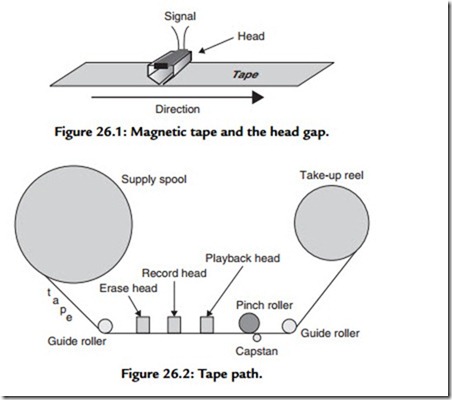Introduction
Magnetic recording underpins the business of music technology. For all its “glitz” and glamour, the music business, at its most basic, is concerned with one simple function: the recording of music signals onto tape or on disc for subsequent duplication and sale. Before the widespread advent of computer hardware, this technology was pretty well unique to the music industry. Not that this limitation did anything to thwart its proliferation—the cassette player was the second most commonplace piece of technology after the light bulb! Nowadays, with the massive expansion in data-recording products, audio—in the form of digital audio—is just another form of data to be recorded in formats and distributed via highways originally intended for other media. The long-term advantage for music recording applications is the reduction in price brought about by utilizing mass-produced products in high-performance applications that previously demanded a precision, bespoke technology.
A sound recording is made onto magnetic tape by drawing the tape past a recording head at a constant speed. The recording head (which is essentially an electromagnet) is energized by the recording amplifier of the tape recorder. The electromagnet, which forms the head itself, has a small gap so that the magnetic flux created by the action of the current in the electromagnet’s coil is concentrated at this gap. The tape is arranged so that it touches the gap in the record head and effectively “closes” the magnetic circuit, as Figure 26.1 illustrates. Because the tape moves and the energizing signal changes with time, a “record” of the flux at any given time is stored on the tape. Replaying a magnetic tape involves dragging the tape back across a similar (or sometimes identical) electromagnet called the playback head. The changing flux detected at the minute gap
Guide roller
in the playback head causes a current to flow in the head’s coil. This is applied to an amplifier to recover the information left on the tape.
In an analogue tape recorder, the pattern stored on the tape is essentially a stored analogue of the original audio waveform. In a digital recorder the magnetic pattern recorded on the tape is a coded signal that must be decoded by the ensuing operation of the playback electronics. However, at a physical level, analogue and digital recordings using magnetic tape (or discs) are identical.
